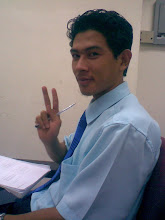
Sports injuries are inevitable when indulging in physically demanding or contact sports. So much so that there is an altogether separate branch of medicine dedicated to the treatment of sports injuries and is called sports medicine. While minor wounds can heal in a few days or weeks, major ones may require surgical attention. However, just like any other surgery, surgical treatment of sports injuries may be expensive in the United States and other Western countries. But thanks to medical tourism, now these treatments can be obtained for cheap. Injuries are an inevitable part of playing any sport, be it tennis, squash, football, baseball, hockey, cycling, golf or any other. Just like defeats don't stop an athlete from moving on, physical injuries should not prevent you from playing sports because there almost always is a way to treat the injury and even major injuries can now be treated affordably through medical tourism. TYPES OF INJURIES Sports injuries may range from bruises and muscle strains, to fractures and head injuries. The most common sports injuries are: Ligament sprains and muscle strains Swollen muscles Knee injuries (torn meniscus, runner's knee or patellofemoral pain syndrome, jumper's knee, articular surface problems, problems with the kneecap) Knee ligament injuries (torn anterior cruciate ligament (ACL), torn posterior cruciate ligament (PCL), torn medial collateral ligament (MCL)) Shoulder injuries (rotator cuff tears, glenoid labrum tear) Tendon injuries (Achilles tendon injuries, DeQuervain's syndrome or washerwoman's sprain or mother's wrist) Pain along the shin bone (shin splints) Bone fractures (scaphoid fracture, hip fracture) Dislocations (shoulders, fingers, knees, wrists, elbows) Spine injuries (herniated disk, sciatica, lumbar spinal stenosis) TREATMENT OPTIONS To accelerate the overall healing process it's important that the initial phase (inflammatory phase) of the injury be minimized with the initial treatments. Treatment often begins with the RICE (Rest, Ice, Compression, and Elevation) regime to relieve pain, reduce swelling and speed healing. Other possible treatments include pain relievers, keeping the injured area from moving, rehabilitation and sometimes surgery. SURGICAL TREATMENT OF INJURIES Surgery is recommended when the more conservative methods of healing and physical therapy have failed to relieve pain and restore normal function. Based on the site and extent of injury and evaluation by your doctor, the surgical approach used could be traditional or laparoscopic (keyhole). The most common surgeries to treat sports-related injuries are: Knee replacement (total or partial) ACL repair or reconstruction Meniscectomy Arthroscopic surgery (knee arthroscopy, shoulder arthroscopy, spinal arthroscopy, wrist arthroscopy, ankle arthroscopy, hip arthroscopy) Tendon repair surgery Laminectomy or laminotomy Discectomy or microdiscectomy Bone fracture repair surgery Hip replacement Hip hemiarthroplasty Birmingham hip resurfacing Spinal decompression surgery MEDICAL TOURISM AND SURGERY If you are insured, your insurance may cover the cost of surgery. But if you have to pay for the surgery out of pocket it may cost you a fortune to have the surgery in the US. Therefore, Americans are increasingly shopping for surgical care in other countries - medical tourism - where the cost of surgery is much less while at the same time the quality offered is superior to what is available in the US. When William Nilsson, an uninsured American, sustained knee injuries while playing football and tore his knee ligaments while playing golf, he resorted to an Indian hospital to get a total knee replacement surgery so he could return to his sports hobbies. Assisted by Healthbase, a medical tourism facilitator based in Boston, he managed to have his surgery for $6,500. The same surgery in the US would have cost him between $30,000 and $40,000. Similarly, Daniel Biggs broke a tendon in his hand when playing golf. He had his tendon repair surgery coordinated by Healthbase in Panama for which he paid $5,500 - a price that was a mere 20% of what he was quoted in the United States. These are just two examples of the hundreds and thousands of people traveling overseas to seek affordable health care for sports-related injuries as well as non-sports related conditions. Countries such as Mexico, Panama, Costa Rica and India are popular medical tourism destinations for such treatments. Price differential is the leading factor for the popularity of medical tourism. Other benefits of using medical tourism are access to high quality and immediate care. You may find more information about affordable medical tourism on the Healthbase website.
Author Resource:- About the author: The author works for Healthbase (www.healthbase.com), a medical tourism facilitator that connects patients to high quality surgical and non-surgical healthcare and dental care abroad for a fraction of cost in the US, Canada and UK.










No comments:
Post a Comment